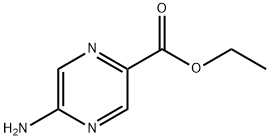Hello, I'd like to ask if oxalic acid dihydrate is polar or non-polar. Could you please give me the answer first and explain the reasons? Also, could you tell me how the molecular structure of oxalic acid dihydrate affects its polarity? What are the impacts of the polarity of oxalic acid dihydrate on its physical and chemical properties? And how can we determine experimentally whether oxalic acid dihydrate is polar or non-polar?
Is Oxalic Acid Dihydrate Polar or Non - polar? Molecular Insights, Property Effects, and Detection
Related Products More >
-
- equest For Quotation
- 1ton



 沪ICP备2021018848号-5
沪ICP备2021018848号-5

Molecular Structure and Polarity of Oxalic Acid Dihydrate
Oxalic acid dihydrate consists of oxalic acid molecules combined with two water molecules. The polarity is determined by:
Polar Functional Groups: Oxalic acid contains two carboxyl groups (–COOH), which are highly polar due to the electronegativity difference between oxygen and hydrogen.
Hydrogen Bonding: The water molecules in the dihydrate form hydrogen bonds with the carboxyl groups, enhancing the overall polarity.
Asymmetric Distribution of Charge: The molecule has an uneven distribution of electron density, with oxygen atoms pulling electron density away from hydrogen and carbon atoms.
Impact of Polarity on Physical and Chemical Properties
The polarity of oxalic acid dihydrate significantly influences its properties:
Solubility: It is highly soluble in polar solvents like water due to strong dipole-dipole interactions and hydrogen bonding.
Melting and Boiling Points: The polar nature contributes to higher melting and boiling points compared to nonpolar compounds of similar molecular weight.
Reactivity: Polarity makes it a good chelating agent, enabling it to bind metal ions effectively.
Hygroscopicity: The presence of water molecules makes it hygroscopic, meaning it readily absorbs moisture from the environment.
Experimental Methods to Determine Polarity
Several experimental techniques can be used to confirm the polarity of oxalic acid dihydrate:
Solubility Tests: Dissolving the compound in polar (e.g., water) and nonpolar (e.g., hexane) solvents. High solubility in water indicates polarity.
Dipole Moment Measurement: Using techniques like dielectric constant measurements to determine the presence of a net dipole moment.
Infrared (IR) Spectroscopy: Identifying characteristic peaks for polar functional groups like –OH and –COOH.
X-ray Crystallography: Visualizing the molecular structure to confirm the presence of polar groups and hydrogen bonding.
In daily life, oxalic acid finds use in several applications. It's commonly used in cleaning products for removing rust stains and hard water deposits due to its capability to chelate metal ions. In the textile industry, it's employed for bleaching and as a mordant in dyeing processes. Moreover, it plays a role in analytical chemistry as a primary standard for standardizing strong base solutions.
When discussing "Is oxalic acid dihydrate polar or nonpolar?", one must understand the implications of its polarity. Its polar nature makes it highly soluble in water and other polar solvents, facilitating its various uses. However, care must be taken when handling oxalic acid because it can be toxic if ingested or inhaled, especially in powdered form where particles can become airborne easily. Protective measures should always be taken during its handling to avoid direct contact or inhalation. Proper storage conditions are also necessary to prevent unwanted reactions with the environment or other chemicals. Understanding these aspects ensures safe and effective utilization of oxalic acid dihydrate in various applications.